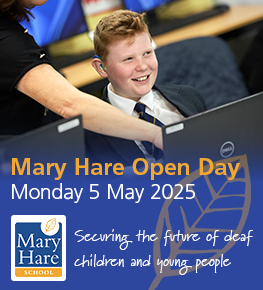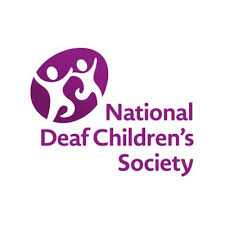3.1. Newborn hearing screening programme (NHSP)
Introduction:
Screening for hearing has always taken place on targeted newborn babies if there were any concerns. In addition, health visitors carried out a screening through the distraction test when babies were around eight months old. However, since 2010 all babies are now routinely screened before they are five weeks old. The screening involves up to three tests, which aim to identify if the cochlea and auditory pathways are responding to sounds. The screening tends to be carried out in hospital or outpatient settings and is performed by trained screeners.
Procedure:
- The first test carried out will be aOAE (automated otoacoustic emissions), which involves small earpieces being inserted into the baby’s ears. The soft clicking sound is transmitted. Any responses from the auditory pathway, up to the inner ear (cochlea), will be picked up on the screening monitor.
- A ‘clear response’ indicates the auditory pathway is working and the baby is reacting to the sounds.
- A ‘response absent’ or ‘inconclusive response’ may indicate some issues or concerns.
- A follow-up test will take place. This could be another aOAE, or an aABR (automated auditory brainstem response). This involves placing a sensor on the baby’s forehead, back of neck, and shoulder (three sensors in total), and soft headphones over the baby’s ears to play soft clicking sounds. The process is looking for hearing nerve responses to the sounds.
- The screening test is non-evasive, is carried out when the baby is asleep and tends to be completed within 15 minutes.
- If the results are still ‘response absent’ or ‘inconclusive response’, the baby needs to be referred to the paediatric audiology service for a more diagnostic assessment.
- There are some situations where the criteria are adjusted, for example, premature babies tend not to be screened until they are 38 weeks. When it is confirmed, the mother has Cytomegalovirus CMV or the baby has meningitis, the baby is referred directly for audiological assessment.
For further information on this procedure refer to:
England: Newborn hearing screening: care pathways – GOV.UK (www.gov.uk)
Northern Ireland: Newborn hearing screening – NI direct
Republic of Ireland: Newborn hearing screening – HSE.ie
Scotland: Universal Newborn Hearing Screening (UNHS) Programme
Wales: Newborn Hearing Screening Wales – Public Health Wales (nhs.wales)
Referral for audiological assessment
The NHSP test simply indicates the possibility of issues or concerns around the baby’s hearing. Establishing the degree of hearing threshold is vital to issue amplification devices if necessary. Paediatric audiology needs to see the baby within four weeks of the referral from NHSP. The family will be invited to an audiology appointment at their local hospital where a range of assessments will take place.
Most referrals made through NHSP will go on to show hearing within satisfactory levels and will be discharged. Only a small percentage will go on to require further intervention.
The audiologists will complete a battery of diagnostic assessments to determine the hearing threshold.
Procedure:
- An ABR (auditory brainstem response) uses sensors to identify responses at a specific frequency (4 kHz; 1 kHz; 500 Hz; 2 kHz). The baby needs to be asleep to give reliable responses. Sensors will be positioned on the baby’s forehead and on either side of the mastoid bone. Small earpieces are inserted into the baby’s ear or headphones are placed over the baby’s ear, where sounds at specific frequencies will be played. The audiologist will be looking for specific markers in the auditory response trace, such as Wave V, to identify at what intensity there are responses.
- As the ABR is picking up biological electrical responses, the assessment should be carried out in a sound-proof and electrical-proof room to prevent any impact or interference from external sounds or appliances.
- The audiologist needs to identify the specific markers at each frequency on each ear. This means the assessment can be a lengthy process.
- The results will be reported, and the estimated threshold can be plotted on an audiogram.
In addition to the ABR, the audiologist will carry out:
Tympanometry:
This assessment is to establish the movement of the tympanic membrane (eardrum) in response to changes in pressure.
Procedure:
- Otoscopy should be performed prior to the assessment. This will ensure the ear canal is not obscured by wax or infection. It also allows the audiologist the opportunity to see the tympanic membrane, which may support the results of the tympanometry.
- A probe tip is inserted into the ear canal and adjusts the pressure onto the eardrum, which evaluates how well the eardrum is moving. The probe tone frequency presented will depend on the age of the baby, eg 1000 Hz if they are under 6 months.
- The baby/infant needs to sit still for a reliable response. Being little, it is easier for the baby/infant to be in the arms of a family member.
- The assessment is very quick but can feel slightly uncomfortable. Some people report it as feeling like being in a moving lift or travelling in a tunnel.
- The results will be referred to as ‘normal’, ‘rounded’, ‘flat’, ‘wide’, or ‘w-shaped’.
- Results other than ‘normal’ could indicate:
- fluid or congestion in the middle ear
- perforation of the tympanic membrane
- malfunction of ossicles
Otoacoustic Emissions (OAE):
The OAE establishes the function of the cochlear by stimulating the outer hair cells. The responses from the stimulation are recorded via the microphone in the probe.
A version of this is carried out at NHSP, purely for screening purposes. During the Audiological Assessment, the results will be used to create a more in-depth diagnosis of the hearing level.
- A probe tip is inserted into the ear canal and sounds are presented. The sounds used will be dependent on which type of OAE is being performed. There are two types of OAE that are carried out.
- TRANSIENT-EVOKED (TE) OAE, which uses a broadband click/chirp sound.
- DISTORTION PRODUCT (DP) OAE, which uses two closely linked pure-tone sounds presented simultaneously.
- This can be carried out in a quiet, not necessarily sound-proof, room. It is a quick assessment taking less than five minutes to complete.
- The baby/infant should be still and quiet for a reliable response. They can be awake or asleep.
- The TEOAE results will be either ‘clear response’ (CR), ‘response absent’ (RA) or ‘inconclusive’. The DPOAE results will be either CR, CR but abnormal, or no clear response.
- Results other than CR may indicate other issues including:
- cochlear damage
- factors affecting the middle ear
- cochlear dysfunction (auditory processing disorder (APD), etc).
- The OAE does not need to be carried out at every appointment, but it is also a monitoring tool for monitoring infants and children undergoing chemotherapy or treatment for congenital cytomegalovirus (cCMV).
- It is also a useful assessment for children who are non-cooperative or difficult to assess, or not developmentally ready for visual reinforcement audiometry (VRA) or distraction tests.
Until a defined level of deafness is identified, Qualified Teachers of Deaf Children and Young People (QToDs) and sensory services are not involved with the infant and consequently are not present during these assessments. Once a diagnosis has been made, the family will be asked if they would like to be referred to the sensory service.
Further reading
For further information on the assessments carried out refer to:
BSA – Recommended-Procedure-for-ABR-Testing-in-Babies (visit the BSA website via this link for most recent publication)
BSA – Recommended Procedure Tympanometry (visit the BSA website via this link for most recent publication)
BSA – Recommended Procedure Clinical Application of Otoacoustic Emissions OAEs (visit the BSA website via this link for most recent publication)
Next pages in section 3
3.3 Visual reinforcement audiometry
3.5 Assessing children with additional needs
3.6 Auditory neuropathy spectrum disorder (ANSD)
3.7 Auditory processing disorder (APD)
3.8 Cochlear implant assessment
3.9 Bone conduction implant assessment
Other sections
- Section 1 Anatomy and physiology of the ear
- Section 2 – Aetiology and types of deafness
- Section 4 Acoustics and physics of sound
- Section 5 Listening skills and functional hearing
- Section 6 Hearing technologies




